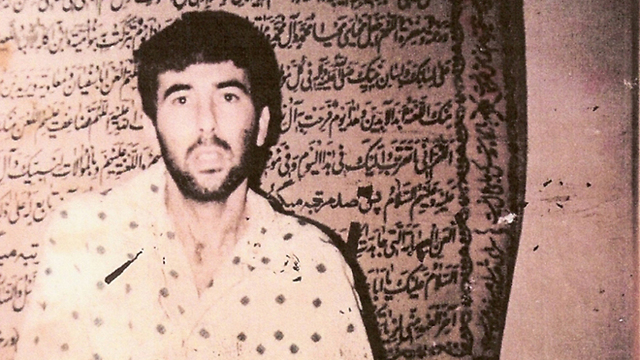
The lies and truths behind recent reports on Ron Arad
Analysis: Lebanese media claims the missing Israeli navigator died of torture in 1988 – a story already established as fabrication by the Israeli government; meanwhile, reports Imad Mughniyah searched for Arad's whereabouts are partly true, and not at all new.
There have been two reports in the Lebanese press over the past week - one completely false and the other partly true and recycled - about the fate of Israeli pilot-navigator Ron Arad.
The first report included testimony from an ongoing trial in Lebanon of several people accused of collaborating with Israel. According to these testimonies, Ron Arad died in captivity in 1988, as a result of torture.
The second report, completely contradictory to the first, made headlines ahead of the anniversary of Imad Mughniyah's assassination and ties him to the locating of Arad's personal items - his parachute and weapon - as well as to forming and heading a Hezbollah investigative team in 2004 that sought to discover Arad's whereabouts.
Until Arad's body is returned to Israel, the mystery surrounding his death will not be completely resolved. The family has the right to claim that intelligence findings do not constitute 100 percent proof, and to demand the State of Israel to continue doing everything in its power to return Arad home. Be that as it may, Israel's intelligence community believes the Arad mystery has already been solved beyond a reasonable doubt, and that he is no longer alive - a belief shared by Halachic officials.
There was a group of swindlers in Beirut that tried to fool the Israeli government in the past with their story of Arad's death as a result of torture. They received some sort of monetary remuneration for the information they provided, which very quickly turned out to be a fabrication meant to exploit Israeli sensitivity on the topic. It was no coincidence that the information provided by the group included internal contradictions and illogical details.
The report about Mughniyah's involvement, however, was more accurate: In 2004, he formed a team within Hezbollah to locate Arad. The objective was for Hezbollah to return Arad to Israel - while securing Israeli commitment to put the affair to rest quietly without pointing to Iranian involvement.
Until 2005, Mughniyah's team did indeed make several attempts to search for Arad, which appeared genuine to the German BND mediators: The team conducted digs across Lebanon using special geologic equipment provided by the Germans. Following those digs, they passed on bones to Israel. Hezbollah believed the chances the bones belonged to Arad were high - mostly because they were found where a Revolutionary Guard man who served in Lebanon in the 1990's said he believed Arad was buried. But DNA tests showed that the bones were not Arad's. When the Germans told Hezbollah this, they encountered strong protest by the organization, which was sure it delivered the right bones, and thought the Israelis were "playing games."
At the same time, several intelligence findings, which cannot be revealed here as they are highly classified, led the head of Israel's intelligence community to an unequivocal conclusion in 2005. The accumulation of different pieces of evidence gathered by a special IDF Intelligence investigative team has led the intelligence community to determine, once and for all, what became of the missing navigator.
The official and painful version the team has adopted was that Arad was kidnapped by an Iranian Revolutionary Guard Corps al-Quds force from the home of the Shukur clan in the village Nabi Shith, where he was imprisoned by Mustafa Dirani, the commander of the "Believing Resistance," a small radical Shi'ite group.
According to the opinion of then-AMAN (IDF military Intelligence) chief, Maj.-Gen. (res.) Aharon Ze'evi-Farkash, Arad was held in Lebanon and was moved to Iran in early 1990, where he was held in isolation and under a veil of secrecy. After Dirani was kidnapped by Israel four years later, the Iranians were worried he would incriminate them as being involved in the affair and decided to return Arad to Lebanon.
According to the IDF Intelligence team's findings, Arad died - as early as at the beginning of 1995 or as late as 1997 - probably from an illness. All of the experts that examined the material gathered by IDF Intelligence determined it was highly credible, and concurred with the assessment that Arad was no longer alive.
Farkash recommended to then-IDF chief of staff Dan Halutz and then-prime minister Ariel Sharon to declare Arad a fallen IDF soldier whose place of burial is unknown, but Sharon, who was worried about the public outcry that would break out and certainly from the Arad family's protest, preferred waiting for DNA proof.











